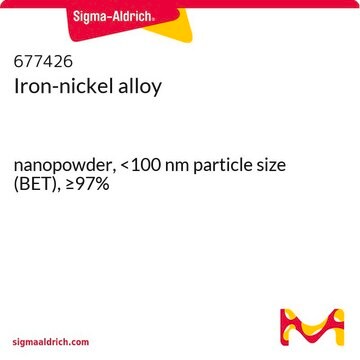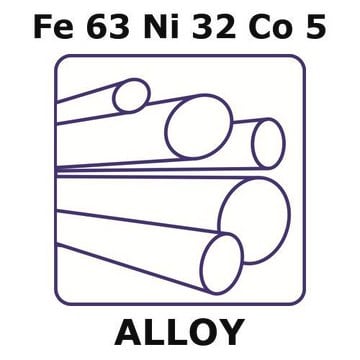GF80419035
Carbon - Vitreous
foil, 8x8mm, thickness 0.5mm, glassy carbon
Sinónimos:
Carbon - Vitreous, VC000395
Iniciar sesiónpara Ver la Fijación de precios por contrato y de la organización
About This Item
Productos recomendados
formulario
foil
fabricante / nombre comercial
Goodfellow 804-190-35
tamaño × grosor
8 x 8 mm × 0.5 mm
InChI
1S/C
Clave InChI
OKTJSMMVPCPJKN-UHFFFAOYSA-N
¿Está buscando productos similares? Visita Guía de comparación de productos
Descripción general
For updated SDS information please visit www.goodfellow.com.
Información legal
Product of Goodfellow
Código de clase de almacenamiento
13 - Non Combustible Solids
Clase de riesgo para el agua (WGK)
nwg
Punto de inflamabilidad (°F)
Not applicable
Punto de inflamabilidad (°C)
Not applicable
Certificados de análisis (COA)
Busque Certificados de análisis (COA) introduciendo el número de lote del producto. Los números de lote se encuentran en la etiqueta del producto después de las palabras «Lot» o «Batch»
¿Ya tiene este producto?
Encuentre la documentación para los productos que ha comprado recientemente en la Biblioteca de documentos.
Antoine P Pagé et al.
PloS one, 10(7), e0132062-e0132062 (2015-07-15)
The objectives of this study were to uncover Salix purpurea-microbe xenobiotic degradation systems that could be harnessed in rhizoremediation, and to identify microorganisms that are likely involved in these partnerships. To do so, we tested S. purpurea's ability to stimulate
Svenja T Lohner et al.
The ISME journal, 8(8), 1673-1681 (2014-05-23)
Direct, shuttle-free uptake of extracellular, cathode-derived electrons has been postulated as a novel mechanism of electron metabolism in some prokaryotes that may also be involved in syntrophic electron transport between two microorganisms. Experimental proof for direct uptake of cathodic electrons
Catharina Vendl et al.
The Journal of experimental biology, 218(Pt 21), 3425-3434 (2015-11-06)
Fundamental differences in methane (CH4) production between macropods (kangaroos) and ruminants have been suggested and linked to differences in the composition of the forestomach microbiome. Using six western grey kangaroos (Macropus fuliginosus) and four red kangaroos (Macropus rufus), we measured
Matthias Egger et al.
Environmental science & technology, 49(1), 277-283 (2014-11-21)
Methane is a powerful greenhouse gas and its biological conversion in marine sediments, largely controlled by anaerobic oxidation of methane (AOM), is a crucial part of the global carbon cycle. However, little is known about the role of iron oxides
Sai Zhang et al.
Journal of biomaterials applications, 29(10), 1394-1406 (2015-01-17)
Nano/micro engineered polymeric materials offer expansive scope of biomimetic scaffolds for bone tissue engineering especially those involving electrospun biodegradable nanofibers incorporated with inorganic nanoparticles, thus mimicking the extracellular matrix of bone both structurally and chemically. For the first time, poly-3-hydroxybutyrate-co-3-hydroxyvalerate
Nuestro equipo de científicos tiene experiencia en todas las áreas de investigación: Ciencias de la vida, Ciencia de los materiales, Síntesis química, Cromatografía, Analítica y muchas otras.
Póngase en contacto con el Servicio técnico






